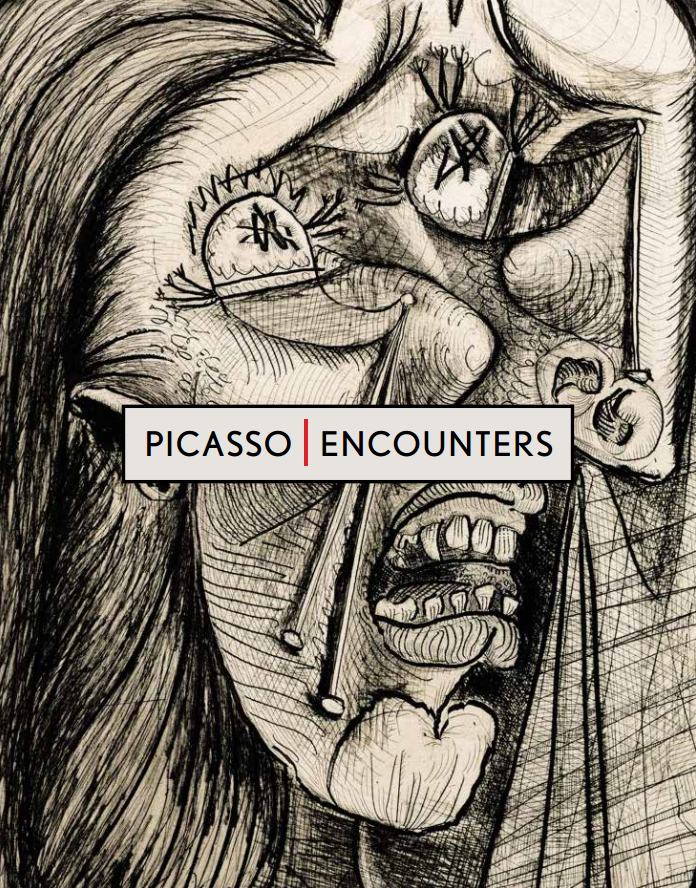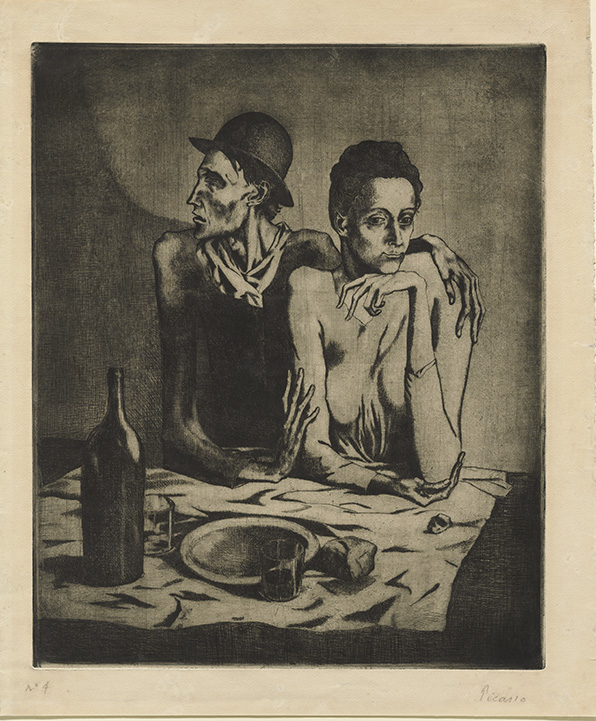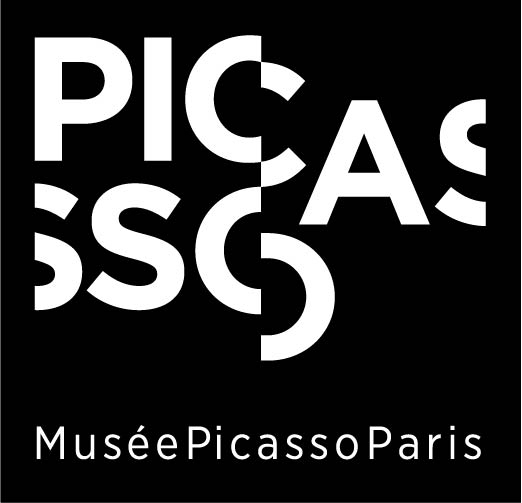
JUNE 4–AUGUST 27, 2017
PICASSO’S EXPERIMENTATION
Pablo Picasso
Spanish, 1881–1973
The Frugal Repast
1904
Etching on paper
Clark Art Institute, Williamstown, Massachusetts, 1962.89
© 2017 Estate of Pablo Picasso / Artists Rights Society (ARS), New York
During the first three decades of his career, Picasso experimented with a number of artistic styles and narrative subjects, and also had three influential romantic partners. Living with his lover Fernande Olivier in Montmartre, a bohemian section of Paris, he depicted individuals at the margins of society such as the poor, as in his Frugal Repast, and circus performers. Starting in 1910, Picasso worked with the French artist Georges Braque to co-invent Cubism. The pair strove to shatter conventional notions of space and representation. Following the First World War, Picasso returned to figuration, rendering his subjects with classical linearity. He became involved in theater design and, through this interest, met his first wife—the Russian dancer Olga Khokhlova. Shortly thereafter, Picasso met Marie-Thérèse Walter, who became his mistress and muse for almost a decade. Throughout this thirty-year period, the range of Picasso’s style and interpersonal relationships was echoed by the number of printmaking techniques with which he experimented: etching, woodcut, aquatint, and lithography.

A fully illustrated catalogue accompanies the exhibition, with an essay by Marilyn McCully on the role of printmakers in Picasso’s artistic process, as well as a new understanding of the importance Picasso’s muses played in the artist’s life by Jay A. Clarke. The catalogue is published by the Clark and distributed by Yale University Press. Call the Museum Store at 413 458 0520 to order.


